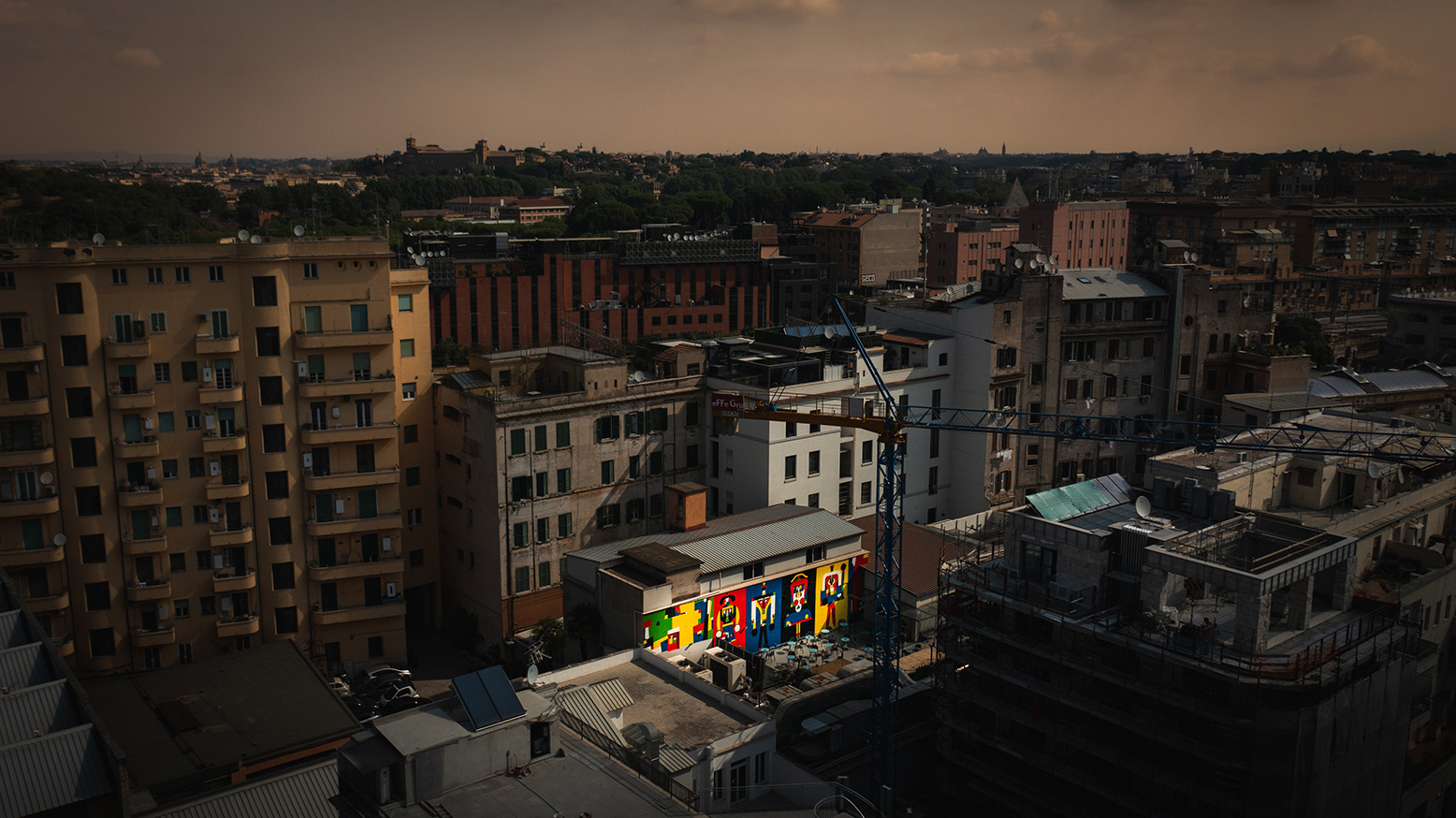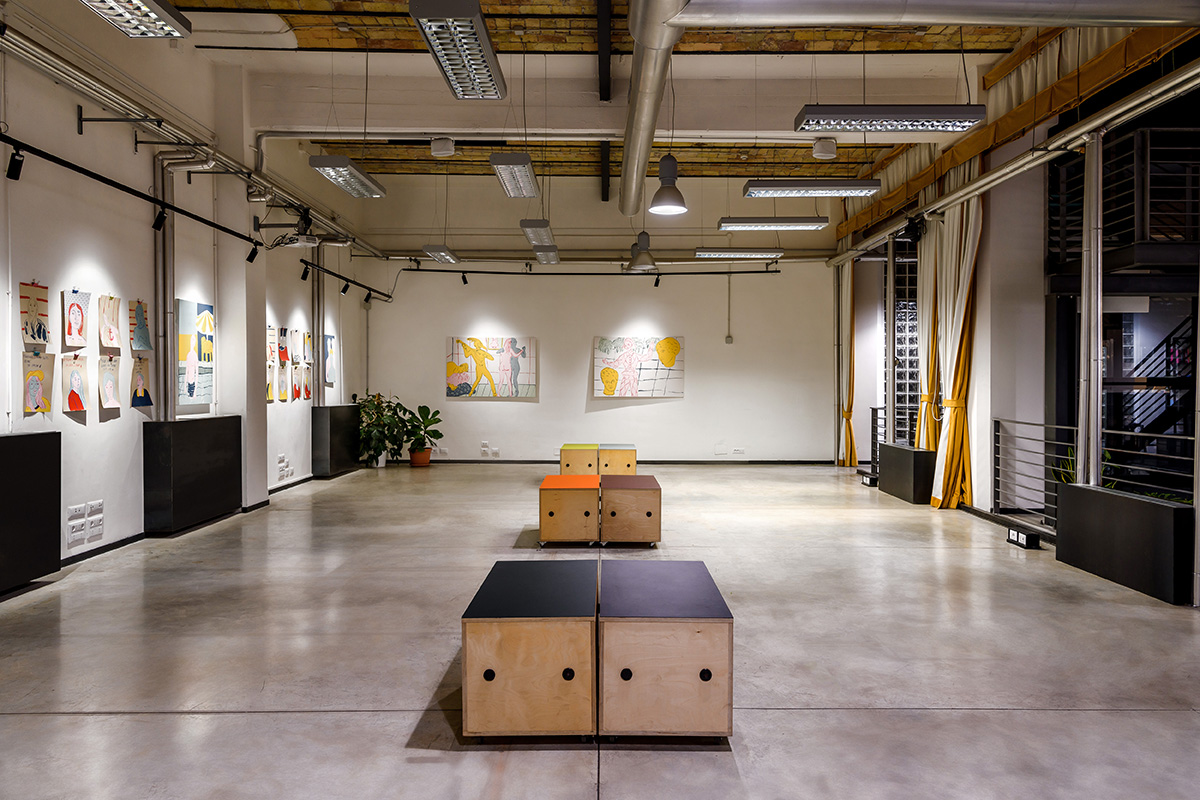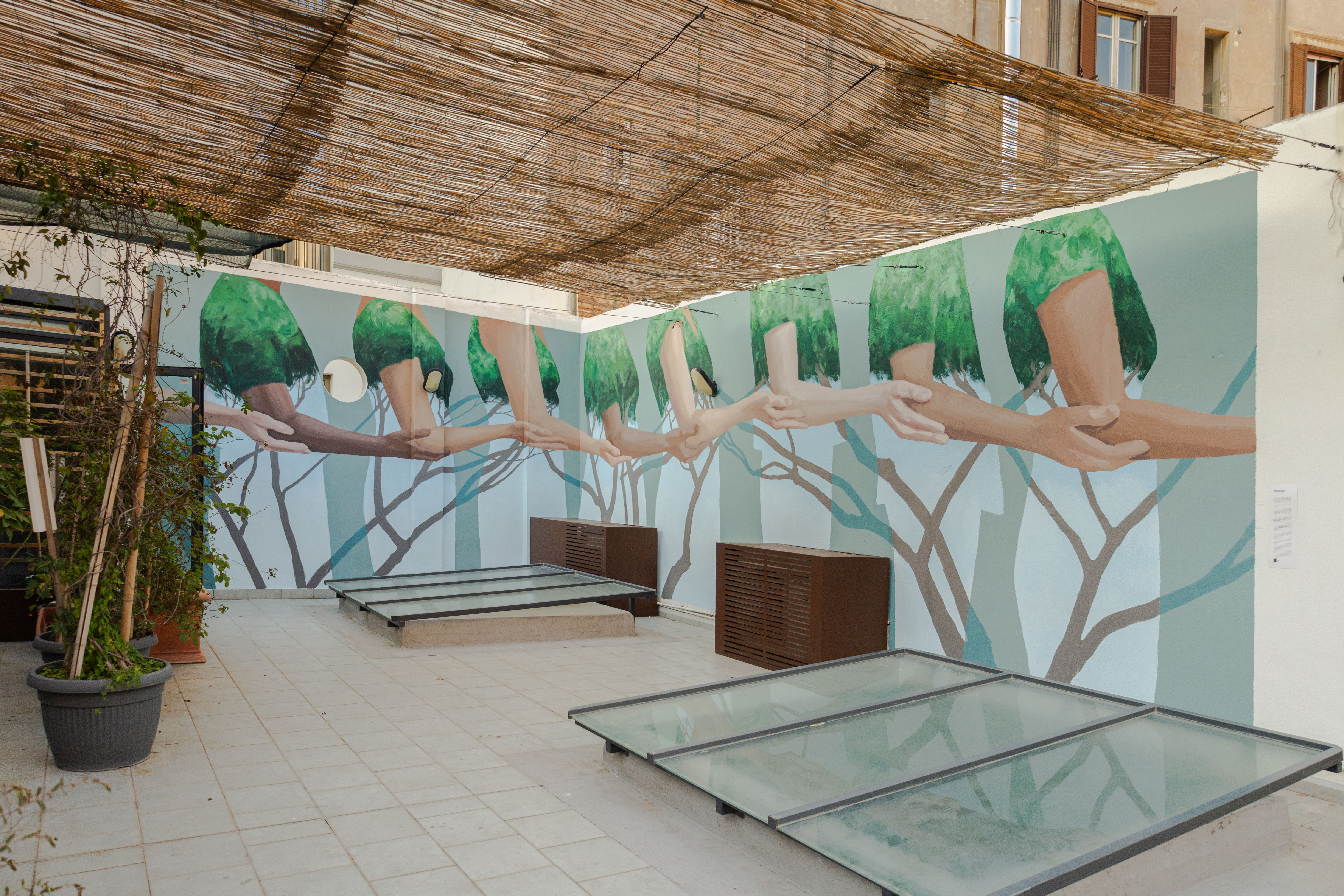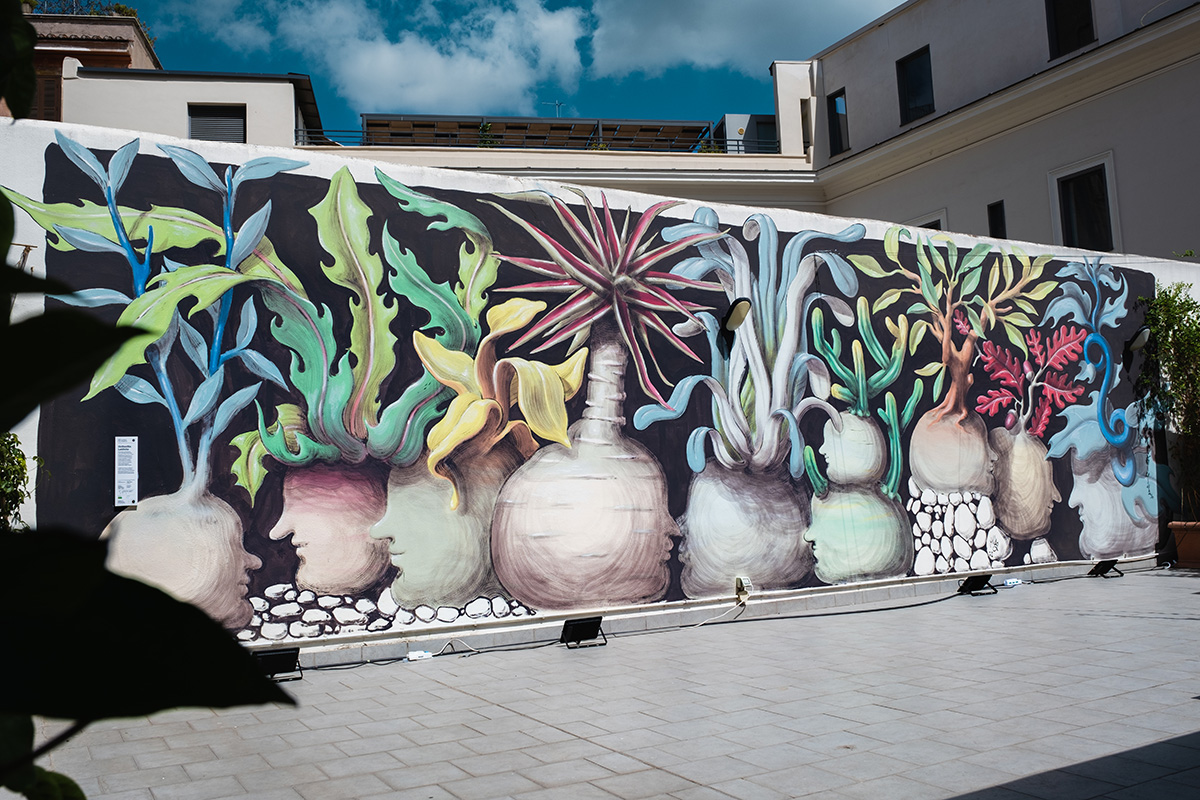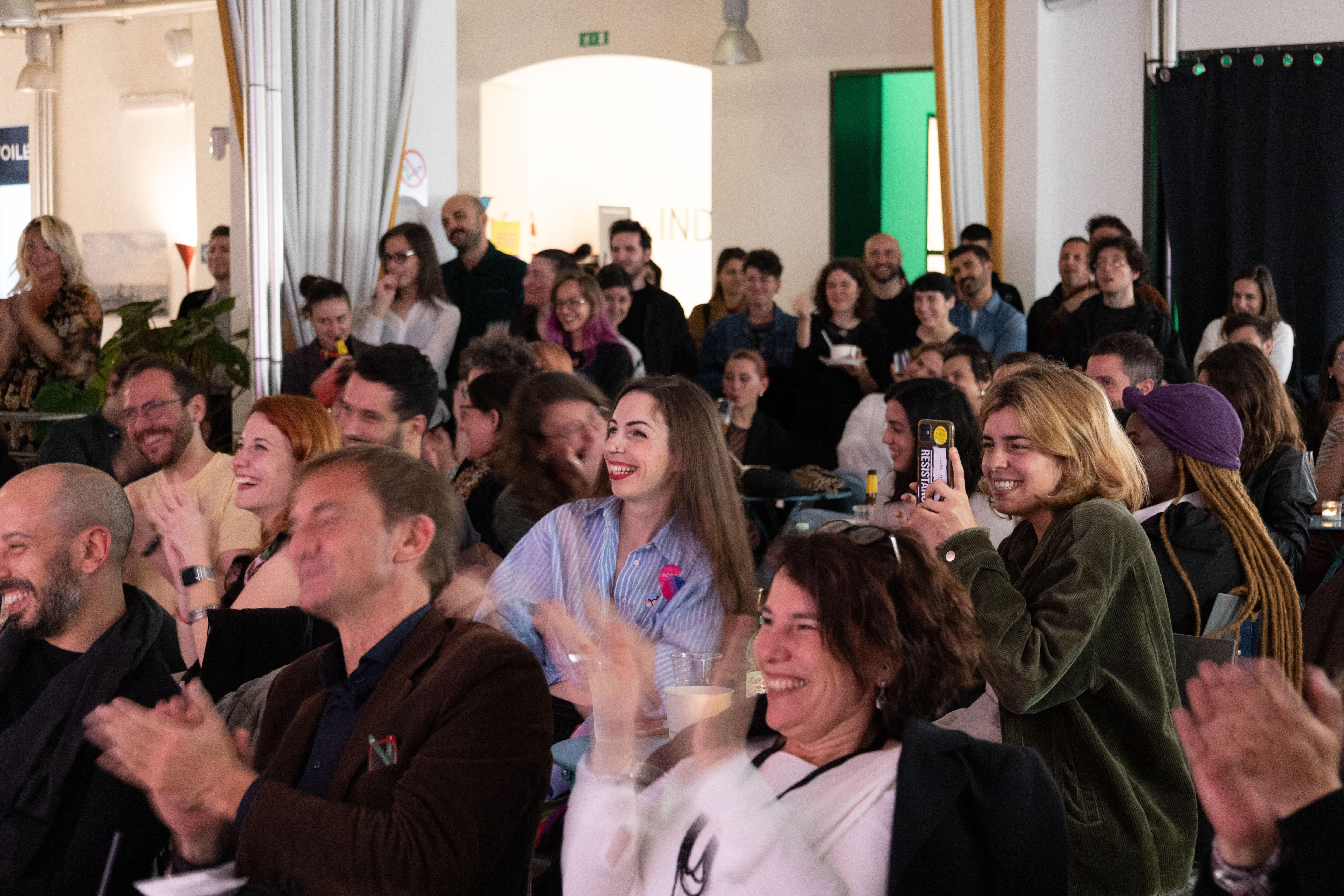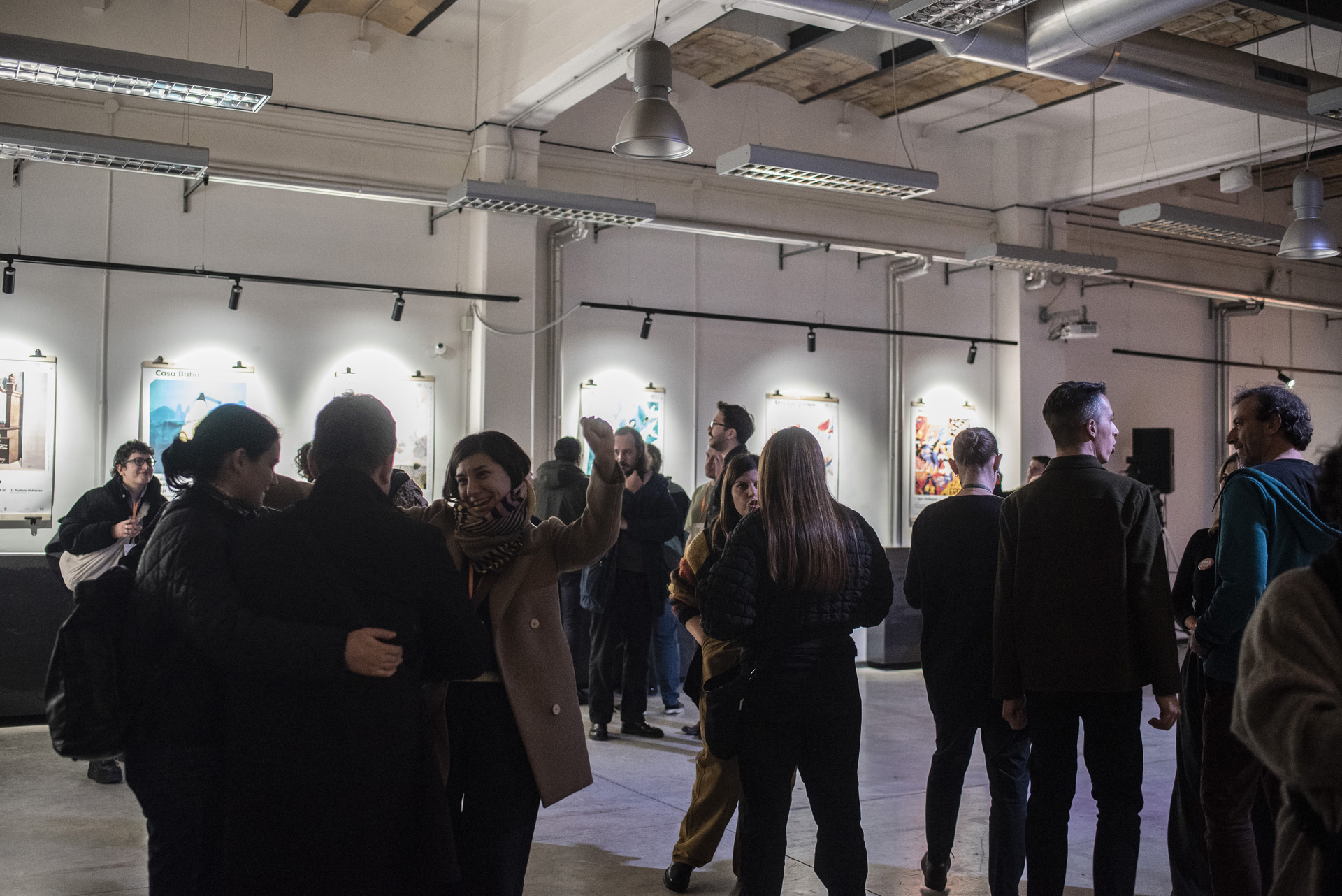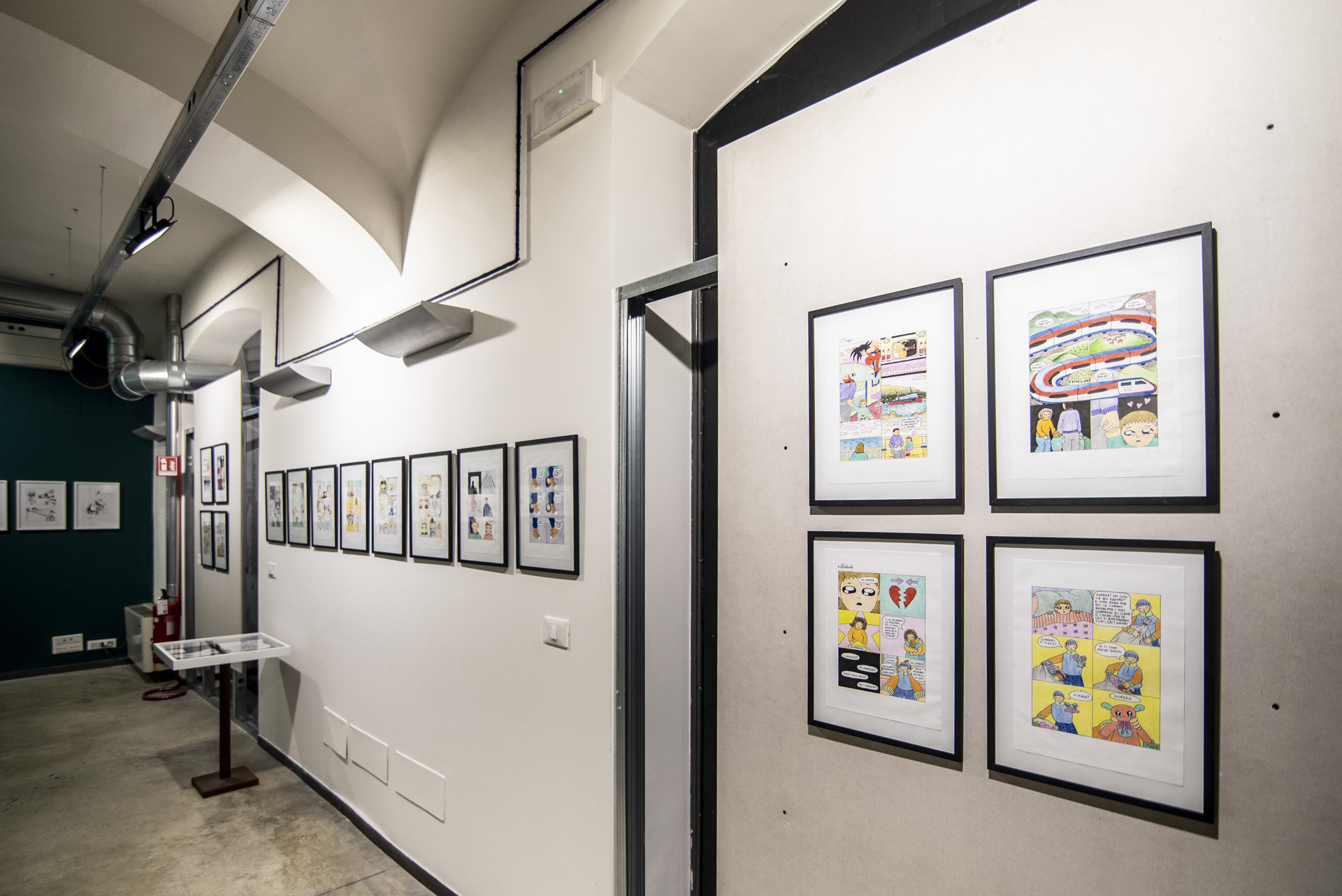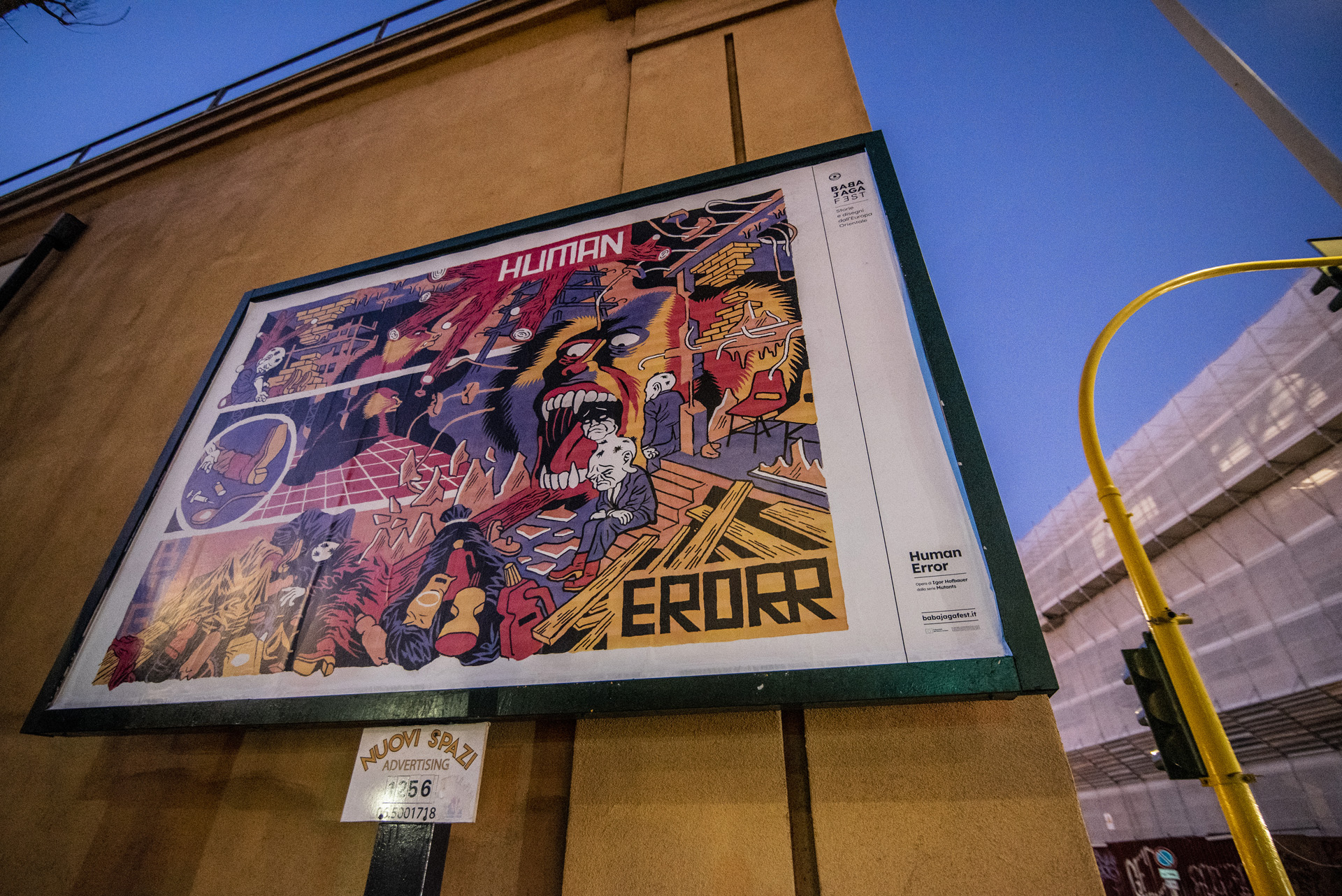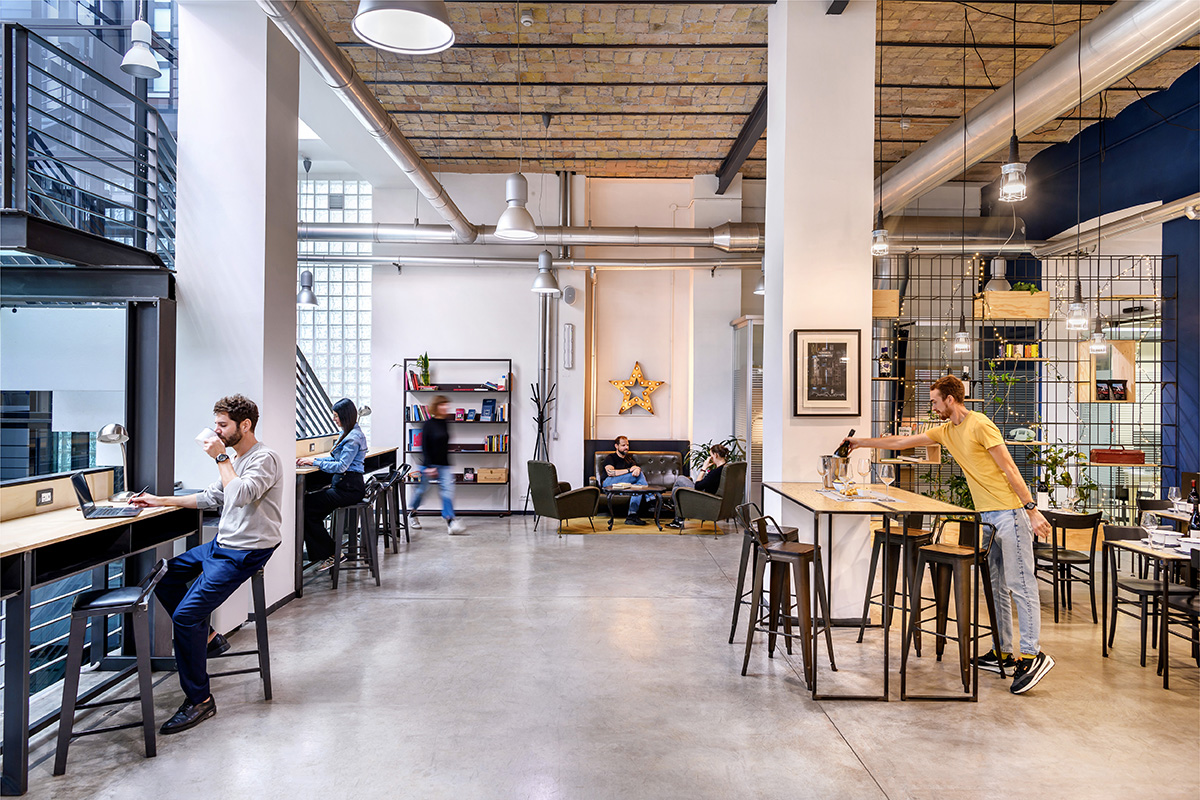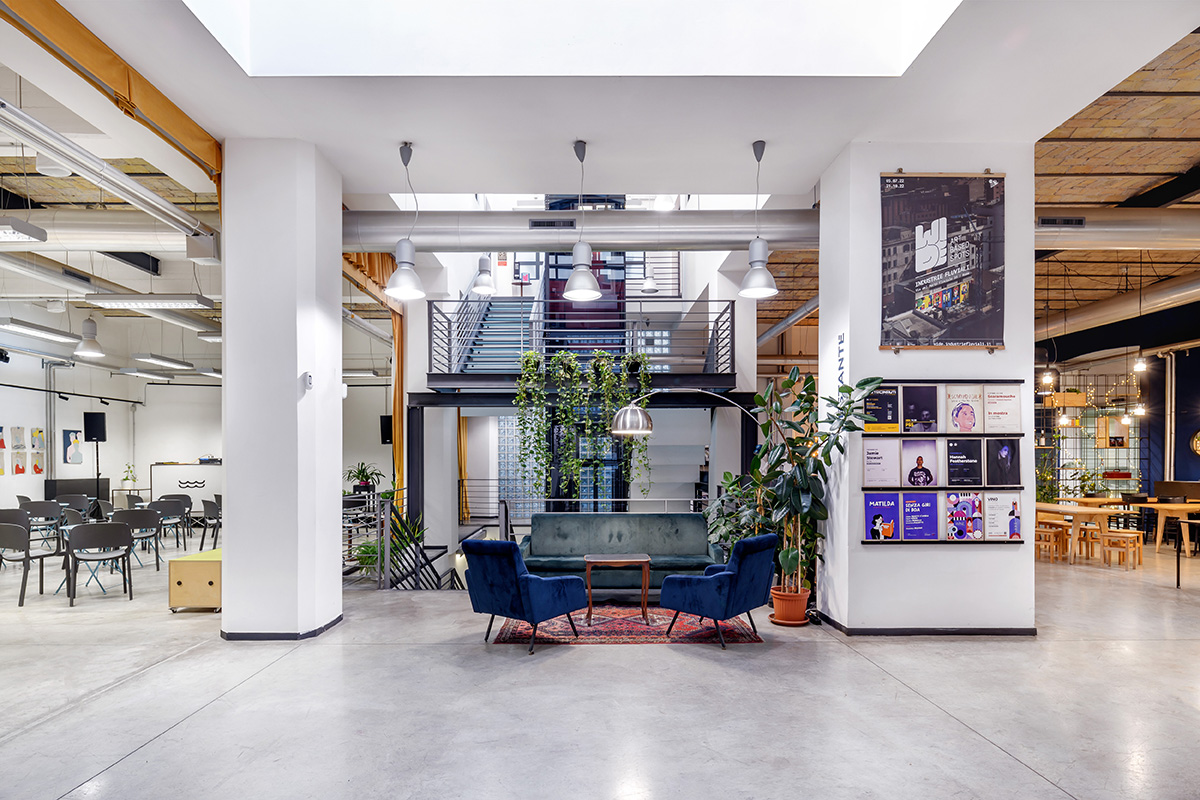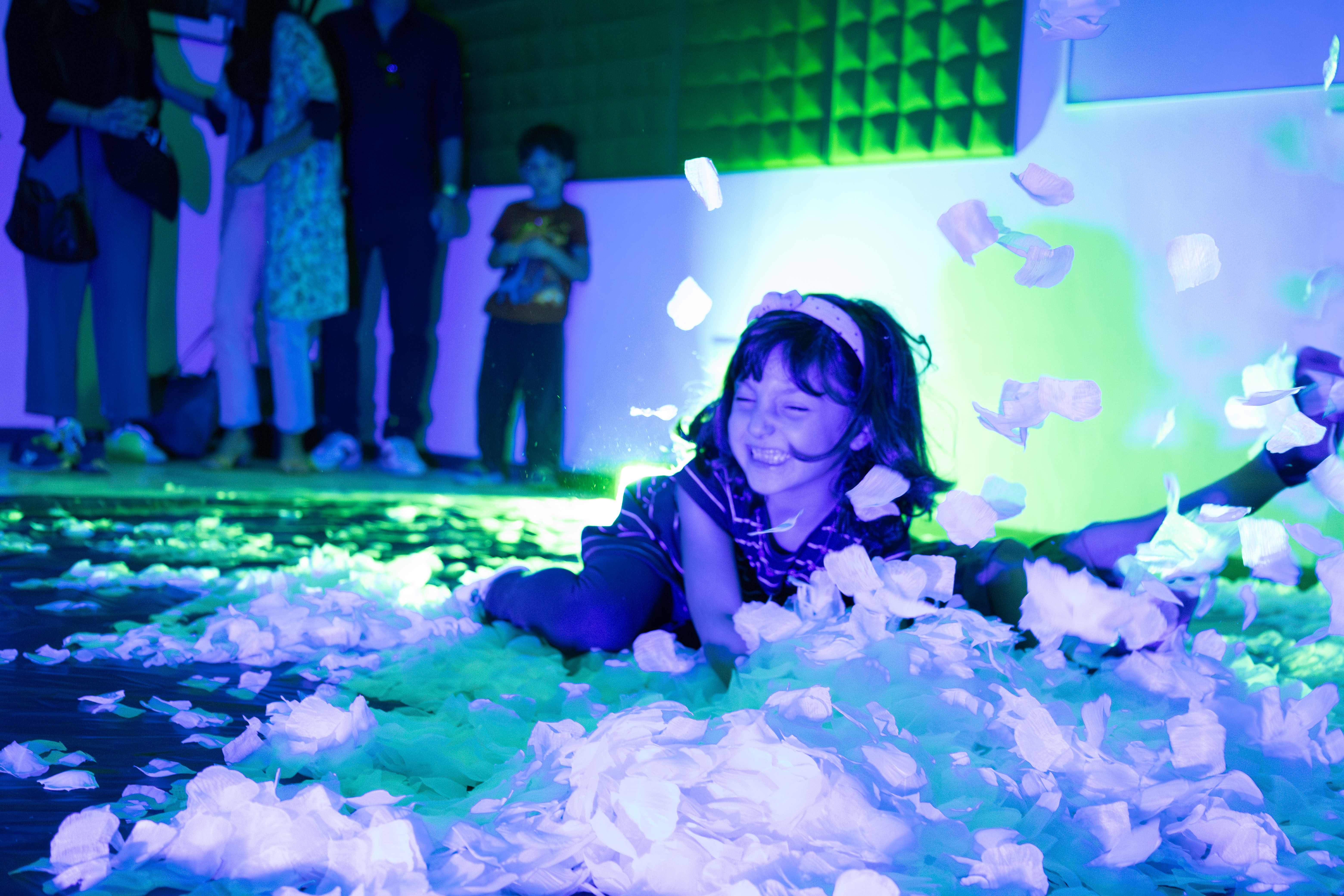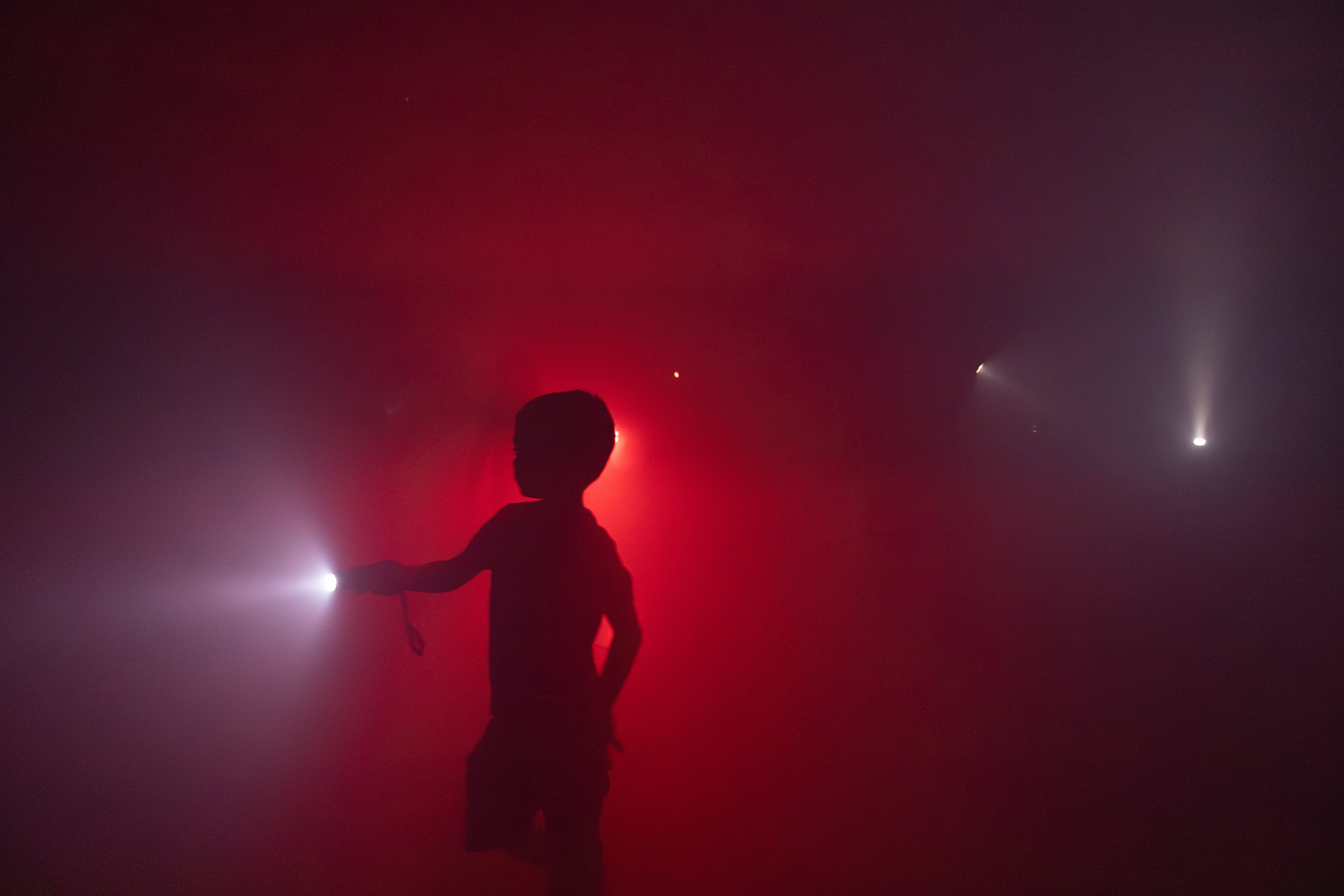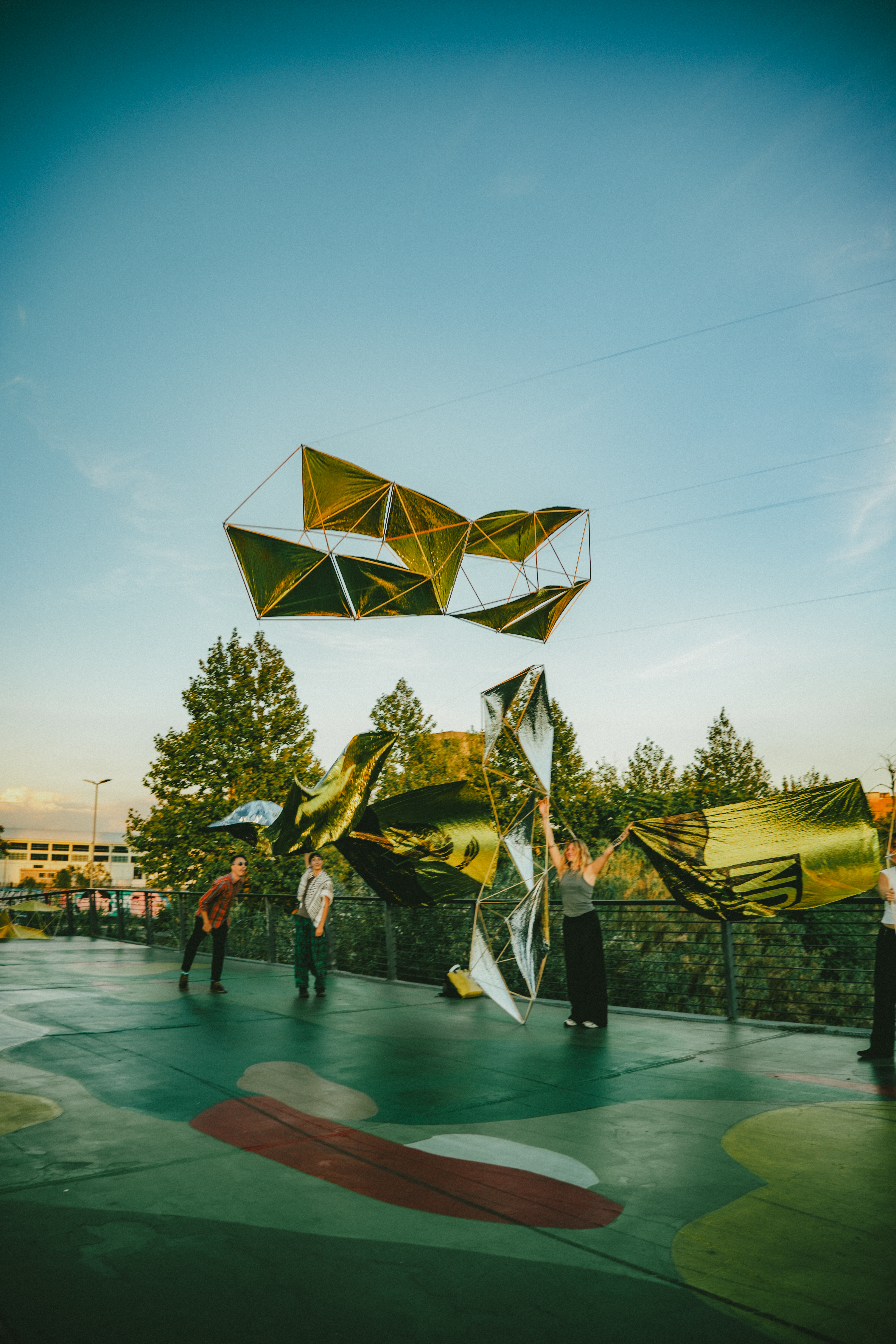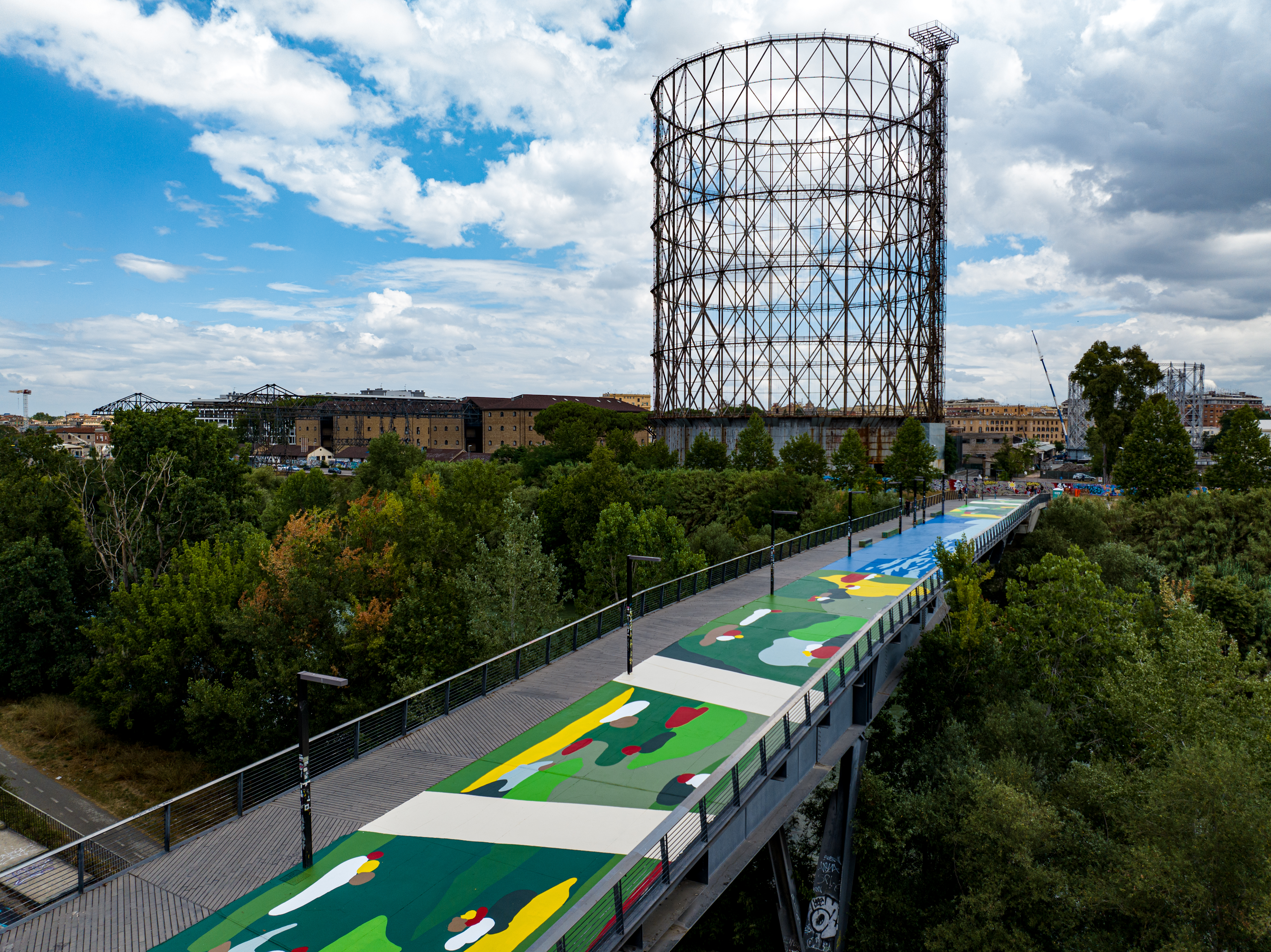Regaining a sense of belonging
Industrie Fluviali
Industrie Fluviali - Cultural ecosystem
Industrie Fluviali is a multifaceted and multiple space, somewhere between a community hub and a cultural center. A local presidium that works in synergy with the territory and the people who inhabit it. Industrie Fluviali has been the production place for hundreds of projects and events: international festivals, art residencies, public art and educational programs focused on urban regeneration, intersectionality and accessibility.
Italy
Local
Rome
Mainly urban
It refers to a physical transformation of the built environment (hard investment)
Yes
2024-11-24
Yes
Creative Europe
No
No
As a representative of an organisation
Industrie Fluviali is a hybrid space that, in the period 2019-2024, has focused its work on the themes of urban regeneration, intersectionality and accessibility. Using the lever of cultural action as a multiplier, it has actively involved citizens in the transformation processes of the territory, encouraging the narration of its specificities, the representation of its criticalities and the activation of its potential.
In its area, millennia-old archaeological sites and industrial sites, cultural institutions and migrant communities, aging population and universities, overtourism and suburbs, urban art and river landscape coexist: Industrie Fluviali worked on the construction of a participatory and horizontal storytelling that could consistently capture these uniquenesses.
The realization of Industrie Fluviali involved the transformation of a former wool factory from a site detached from the neighborhood to a cultural and social defense bound to the territory. It promotes an inclusive idea of development that values beauty and plurality, focuses on a specific territory to respond to global challenges, and addresses territorial communities, marginalized people, and publics of cultural and creative activities.
In order to pursue its objectives with respect for the territorial context, Industrie Fluviali has adopted tools to incorporate the demands and sentiments of local communities, including partnerships with public and private stakeholders, statistical surveys, co-design workshops, public meetings, free concessions of its spaces to associations and collectives, and artistic residencies with artists oriented towards socially engaged art.
It signed a community deal with the Biblioteche di Roma institution and the local municipality, creating a library desk in an area without libraries.
Its participatory co-design workshop served to direct its action towards the creation of public meeting spaces that have a link with the natural resources of the area.
In its area, millennia-old archaeological sites and industrial sites, cultural institutions and migrant communities, aging population and universities, overtourism and suburbs, urban art and river landscape coexist: Industrie Fluviali worked on the construction of a participatory and horizontal storytelling that could consistently capture these uniquenesses.
The realization of Industrie Fluviali involved the transformation of a former wool factory from a site detached from the neighborhood to a cultural and social defense bound to the territory. It promotes an inclusive idea of development that values beauty and plurality, focuses on a specific territory to respond to global challenges, and addresses territorial communities, marginalized people, and publics of cultural and creative activities.
In order to pursue its objectives with respect for the territorial context, Industrie Fluviali has adopted tools to incorporate the demands and sentiments of local communities, including partnerships with public and private stakeholders, statistical surveys, co-design workshops, public meetings, free concessions of its spaces to associations and collectives, and artistic residencies with artists oriented towards socially engaged art.
It signed a community deal with the Biblioteche di Roma institution and the local municipality, creating a library desk in an area without libraries.
Its participatory co-design workshop served to direct its action towards the creation of public meeting spaces that have a link with the natural resources of the area.
Urban regeneration
Intersectionality
Underrepresented group
Public art
Social inclusion
In terms of sustainability, the main objectives of the project are:
1. to highlight the connections between urban landscape and natural landscape
2. create synergies between art and the natural environment
3. reduce the environmental impact of cultural production
4. urban greening as a social urgency
5. create positive energy districts
Objectives no. 1 and 2 refer to the possibility of imagining, through artistic action, a continuity between the anthropic environment of the city and the regressive environment of the natural space, promoting an idea of nature that is a model of beauty but also of social innovation.
Among the actions implemented in pursuit of these goals are the public artworks created with the artists Alleg, Eloise Gillow and Giulio Vesprini, based on instances identified in participatory co-design workshops. Themes include the model of nature as collective intelligence, cooperation among individuals, and native species as a model for constructing a plural identity. Built on the walkable surface of a pedestrian bridge over the Tevere River, Vesprini's Upside Down portrays the river environment below by giving it back to a community that has almost forgotten it.
Objective no. 3 concerns reducing the environmental impact of cultural productions and public events through, for example: the use of certified low-impact printing inks and recycled paper for catalogs, brochures...; the use of natural materials for event setups; the replacement of plastic bottles with microfiltered water dispensers; the use of only compostable tableware for food & drinks; the promotion of sustainable mobility with reward programs for the public.
Objective no. 4 was pursued through citizen participation in landscaping, desealing, planting of flower essences, and participatory clean-ups.
Objective no. 5 was pursued by joining a partnership with Roma Tre University to integrate PEDs into an existing context to create climate-neutral, resilient and livable.
1. to highlight the connections between urban landscape and natural landscape
2. create synergies between art and the natural environment
3. reduce the environmental impact of cultural production
4. urban greening as a social urgency
5. create positive energy districts
Objectives no. 1 and 2 refer to the possibility of imagining, through artistic action, a continuity between the anthropic environment of the city and the regressive environment of the natural space, promoting an idea of nature that is a model of beauty but also of social innovation.
Among the actions implemented in pursuit of these goals are the public artworks created with the artists Alleg, Eloise Gillow and Giulio Vesprini, based on instances identified in participatory co-design workshops. Themes include the model of nature as collective intelligence, cooperation among individuals, and native species as a model for constructing a plural identity. Built on the walkable surface of a pedestrian bridge over the Tevere River, Vesprini's Upside Down portrays the river environment below by giving it back to a community that has almost forgotten it.
Objective no. 3 concerns reducing the environmental impact of cultural productions and public events through, for example: the use of certified low-impact printing inks and recycled paper for catalogs, brochures...; the use of natural materials for event setups; the replacement of plastic bottles with microfiltered water dispensers; the use of only compostable tableware for food & drinks; the promotion of sustainable mobility with reward programs for the public.
Objective no. 4 was pursued through citizen participation in landscaping, desealing, planting of flower essences, and participatory clean-ups.
Objective no. 5 was pursued by joining a partnership with Roma Tre University to integrate PEDs into an existing context to create climate-neutral, resilient and livable.
The spark from which the project was born was the inclination to create a space of dialog whose identity devices were those of design and urban art. This in an urban context where cultural centers open to participation are rare and characterized mainly as spaces of conflict, where aesthetic research is almost nil.
This meant that the aesthetic connotation of the space and its communication tools had to be accompanied by a profound storytelling that would not compromise the credibility of the project.
By transforming the building to create Industrie Fluviali, we chose to functionalize the space without abandoning its history, keeping original elements of the factory (such as the boiler, pipes, vaulted ceilings) to consolidate the link with the past of the place and the neighborhood, once the city's industrial area. The passage of sunlight and an abundance of botanical species have been promoted in the interior and exterior spaces to emphasize the project's function as an open "square", open for the components of territorial communities to meet.
Custom-made furniture and flexible solutions were designed, opting for a minimal but highly recognizable aesthetic character, based mainly on the alternation of natural wood and steel.
The Hub has been conceived as a transformative structure in which the alternation of lighting and seating systems and the permeability of the indoor space with the outdoor space (two terraces equipped for outdoor events) allow for a variety of other projects, and in which a system of digital locks allows for the contingency of spaces and ensures the simultaneity of multiple activities.
A path of artworks created specifically for Industrie Fluviali by Andrea Casciu, Officinadïdue, Lorenzo Malloni, Leonardo Crudi, Carla Rak and Geometric Bang connects the space to the territory, to its natural and industrial history and to its identity as a "street art district".
This meant that the aesthetic connotation of the space and its communication tools had to be accompanied by a profound storytelling that would not compromise the credibility of the project.
By transforming the building to create Industrie Fluviali, we chose to functionalize the space without abandoning its history, keeping original elements of the factory (such as the boiler, pipes, vaulted ceilings) to consolidate the link with the past of the place and the neighborhood, once the city's industrial area. The passage of sunlight and an abundance of botanical species have been promoted in the interior and exterior spaces to emphasize the project's function as an open "square", open for the components of territorial communities to meet.
Custom-made furniture and flexible solutions were designed, opting for a minimal but highly recognizable aesthetic character, based mainly on the alternation of natural wood and steel.
The Hub has been conceived as a transformative structure in which the alternation of lighting and seating systems and the permeability of the indoor space with the outdoor space (two terraces equipped for outdoor events) allow for a variety of other projects, and in which a system of digital locks allows for the contingency of spaces and ensures the simultaneity of multiple activities.
A path of artworks created specifically for Industrie Fluviali by Andrea Casciu, Officinadïdue, Lorenzo Malloni, Leonardo Crudi, Carla Rak and Geometric Bang connects the space to the territory, to its natural and industrial history and to its identity as a "street art district".
Industrie Fluviali is one of several projects designed by Pingo for people with disabilities. Spread over 3 levels that include several rooms, a coworking space, a bar space and 2 terraces, it is fully accessible to people with mobility disabilities. A person in a wheelchair can independently enter the Hub from the street, reach all floors, all indoor and outdoor spaces, and use the restrooms on two different floors.
With the implementation of the Inclusion Hub program, Industrie Fluviali has been equipped with tactile maps and audio guides for the orientation of blind people in its spaces, as well as audio descriptions of all the permanent artworks.
As part of the same program, Pingo provided Industrie Fluviali with an Inclusion Manager (Aura Donzella) whose role is to monitor the critical issues of the space and its onsite/online activities in terms of accessibility, interact with associations of people with disabilities, promote improvements and modifications, and train the team to welcome people with disabilities (including sign language courses).
For events with speakers or artists in wheelchairs (e.g. Marina Cuollo for Genderscape and Carmelo Comisi for Disability Pride), the stage was equipped with special ramps. For the Baba Jaga Fest, which took place in 9 locations across the territory as part of Creative Europe, precise instructions were given to the audience, not only about the accessibility of all the venues, but also about their inaccessibility. The Hub was also involved in Plurale, a project by Blam (Salerno) to draft guidelines on the issue of accessibility in cultural spaces.
Pingo's management is majority female, and gender issues are at the heart of the project partnerships that have been established for the realization of Industrie Fluviali with PuntoViola, TDOV, Circolo Mario Mieli and Arcigay. Industrie Fluviali also has a specification for inclusive language and genderless toilet.
All workshops and events are free of charge.
With the implementation of the Inclusion Hub program, Industrie Fluviali has been equipped with tactile maps and audio guides for the orientation of blind people in its spaces, as well as audio descriptions of all the permanent artworks.
As part of the same program, Pingo provided Industrie Fluviali with an Inclusion Manager (Aura Donzella) whose role is to monitor the critical issues of the space and its onsite/online activities in terms of accessibility, interact with associations of people with disabilities, promote improvements and modifications, and train the team to welcome people with disabilities (including sign language courses).
For events with speakers or artists in wheelchairs (e.g. Marina Cuollo for Genderscape and Carmelo Comisi for Disability Pride), the stage was equipped with special ramps. For the Baba Jaga Fest, which took place in 9 locations across the territory as part of Creative Europe, precise instructions were given to the audience, not only about the accessibility of all the venues, but also about their inaccessibility. The Hub was also involved in Plurale, a project by Blam (Salerno) to draft guidelines on the issue of accessibility in cultural spaces.
Pingo's management is majority female, and gender issues are at the heart of the project partnerships that have been established for the realization of Industrie Fluviali with PuntoViola, TDOV, Circolo Mario Mieli and Arcigay. Industrie Fluviali also has a specification for inclusive language and genderless toilet.
All workshops and events are free of charge.
The project represents a point of discontinuity in the transformation of the neighborhood into a nightlife district. In a context characterized by the replacement of the local shops with bars and restaurants, the activities of Industrie Fluviali are carried out according to the rhythm of the neighborhood in terms of timetables and have no impact in terms of waste production.
The most negative impact noticed is the lack of parking lots in the area during the activities of Industrie Fluviali. This has been combated by rewarding the use of public transport.
The district is part of a municipality of about 50 square kms, managed by a local authority that has to deal with a vast territory with almost no resources at its disposal, given the centralism of the city administration. Industrie Fluviali was the link between the local communities and the public administration, as a listening point, an amplifier of proposals and a planning base, through: organizing public meetings on the occasion of important urban planning interventions; co-organizing and hosting, free of charge, events of non-profit organizations and their headquarters; weekly hospitality of a tailor shop for the employment of migrants; involvement of the Afghan and Kurdish communities in design and construction workshops.
The relationship with the community was also a planning resource for the entire project.
The initial design of the project was based on a neighborhood survey of community needs and desires.
Nonprofit organizations were directly involved in the design of several implementations (e.g., Radici APS and Disability Pride Network for the Inclusion Hub program).
A six-month bi-annual co-design laboratory (with citizens, institutions, teachers from Roma Tre University, managers of private academies, cultural institutions, the Neighborhood Committee and the local Senior Citizens' Center) is the tool that directs the activities of Industrie Fluviali towards the achievement of common goals.
The most negative impact noticed is the lack of parking lots in the area during the activities of Industrie Fluviali. This has been combated by rewarding the use of public transport.
The district is part of a municipality of about 50 square kms, managed by a local authority that has to deal with a vast territory with almost no resources at its disposal, given the centralism of the city administration. Industrie Fluviali was the link between the local communities and the public administration, as a listening point, an amplifier of proposals and a planning base, through: organizing public meetings on the occasion of important urban planning interventions; co-organizing and hosting, free of charge, events of non-profit organizations and their headquarters; weekly hospitality of a tailor shop for the employment of migrants; involvement of the Afghan and Kurdish communities in design and construction workshops.
The relationship with the community was also a planning resource for the entire project.
The initial design of the project was based on a neighborhood survey of community needs and desires.
Nonprofit organizations were directly involved in the design of several implementations (e.g., Radici APS and Disability Pride Network for the Inclusion Hub program).
A six-month bi-annual co-design laboratory (with citizens, institutions, teachers from Roma Tre University, managers of private academies, cultural institutions, the Neighborhood Committee and the local Senior Citizens' Center) is the tool that directs the activities of Industrie Fluviali towards the achievement of common goals.
Municipio VIII is the local municipality. It is involved in every step of the project that directly affects the public space and the community. It has made it possible to simplify the implementation process and reach out to civil society.
Confcooperative is a national cooperative powerhouse that helped guide the project to obtain grants necessary for its sustainability and to certify its inclusive planning.
NABA is a national art academy with a local presence. It has signed a collaboration agreement that directs Industrie Fluviali's productions to involve students in the creation of public artworks and art festivals.
IGT Italia is a company with headquarters in the area that funds public art interventions by Industrie Fluviali aimed at strengthening the links between the present and the future of the district, creating a sense of belonging and encouraging the exploration of its streets.
Biblioteche di Roma is the city's library institution. It signed a municipal agreement to set up a library lending service in Industrie Fluviali after the closure of the neighborhood library. It has hosted in its libraries throughout the city the educational workshops promoted by Industrie Fluviali as part of its Baba Jaga Fest festival. Industrie Fluviali has hosted its weekly reading group.
Disability Pride Network and Radici APS are local organizations that have helped design accessible features and services.
Seedble is a local company that helped adapt the project to the changing socio-economic scenarios.
The Polish Institute and the Czech Center contribute to the involvement of Central and Eastern European communities in the area and to the attraction of artists from abroad, which is essential for the implementation of culturally based cooperation projects.
The U.S. Embassy has been a point of contact for the implementation of special projects oriented to the goals of Industrie Fluviali, through co-design and co-financing (Tech Camp, Everyday Democracy).
Confcooperative is a national cooperative powerhouse that helped guide the project to obtain grants necessary for its sustainability and to certify its inclusive planning.
NABA is a national art academy with a local presence. It has signed a collaboration agreement that directs Industrie Fluviali's productions to involve students in the creation of public artworks and art festivals.
IGT Italia is a company with headquarters in the area that funds public art interventions by Industrie Fluviali aimed at strengthening the links between the present and the future of the district, creating a sense of belonging and encouraging the exploration of its streets.
Biblioteche di Roma is the city's library institution. It signed a municipal agreement to set up a library lending service in Industrie Fluviali after the closure of the neighborhood library. It has hosted in its libraries throughout the city the educational workshops promoted by Industrie Fluviali as part of its Baba Jaga Fest festival. Industrie Fluviali has hosted its weekly reading group.
Disability Pride Network and Radici APS are local organizations that have helped design accessible features and services.
Seedble is a local company that helped adapt the project to the changing socio-economic scenarios.
The Polish Institute and the Czech Center contribute to the involvement of Central and Eastern European communities in the area and to the attraction of artists from abroad, which is essential for the implementation of culturally based cooperation projects.
The U.S. Embassy has been a point of contact for the implementation of special projects oriented to the goals of Industrie Fluviali, through co-design and co-financing (Tech Camp, Everyday Democracy).
The design of Industrie Fluviali is based on the integration of 4 main disciplines:
1. Social sciences, with special reference to the intersectionality studies as defined by Kimberlé Crenshaw and the work of bell hooks;
2. Urbanism of culture-led urban regeneration, as described in the mid-1990s by urban planners such as Charles Landry and cultural planners such as Franco Bianchini;
3. The curation of art in public space, according to the critical principles described by Suzanne Lacy in the 1990s, and earlier by the critical work of Jeff Kelley;
4. Product design, by defining a recognizable aesthetic oriented towards beauty and the multiple functions of design.
As a hybrid space, in addition to these basic principles, different forms of expression have converged. Decisive factors have been: an unprejudiced approach to different disciplines; a curatorial approach in line with the creative direction of the project, defined by the team taking into account the peculiarities and mutations of the territorial context.
Urban art, music, comics & illustration, literature, photography & self-production, botany, architecture & urbanism, dance culture have contributed to the definition of Industrie Fluviali's annual program of activities, in most cases hybridizing into multidisciplinary and cross-disciplinary activities (maintaining the project's basic approach: accessibility, intersectionality and inclusivity).
For example, music, urban art, architecture, botany and urbanism were components of several activities: WIDE Art Based Spots; Dots Connecting Ostiense; Metronauti Radio Live Show. Self-production, music, literature and visual arts (photography, comics, illustration) were the ingredients of Baba Jaga Fest and Funzilla.
Some of the project's internal productions, such as Genderscape and Matilda, overlapped to contribute to a plural narrative of gender issues, between literature, theatrical performance, ballroom culture, illustration and journalistic podcasts.
1. Social sciences, with special reference to the intersectionality studies as defined by Kimberlé Crenshaw and the work of bell hooks;
2. Urbanism of culture-led urban regeneration, as described in the mid-1990s by urban planners such as Charles Landry and cultural planners such as Franco Bianchini;
3. The curation of art in public space, according to the critical principles described by Suzanne Lacy in the 1990s, and earlier by the critical work of Jeff Kelley;
4. Product design, by defining a recognizable aesthetic oriented towards beauty and the multiple functions of design.
As a hybrid space, in addition to these basic principles, different forms of expression have converged. Decisive factors have been: an unprejudiced approach to different disciplines; a curatorial approach in line with the creative direction of the project, defined by the team taking into account the peculiarities and mutations of the territorial context.
Urban art, music, comics & illustration, literature, photography & self-production, botany, architecture & urbanism, dance culture have contributed to the definition of Industrie Fluviali's annual program of activities, in most cases hybridizing into multidisciplinary and cross-disciplinary activities (maintaining the project's basic approach: accessibility, intersectionality and inclusivity).
For example, music, urban art, architecture, botany and urbanism were components of several activities: WIDE Art Based Spots; Dots Connecting Ostiense; Metronauti Radio Live Show. Self-production, music, literature and visual arts (photography, comics, illustration) were the ingredients of Baba Jaga Fest and Funzilla.
Some of the project's internal productions, such as Genderscape and Matilda, overlapped to contribute to a plural narrative of gender issues, between literature, theatrical performance, ballroom culture, illustration and journalistic podcasts.
In the project field, 3 models prevail: private initiative to manage performance spaces/organize large cultural events; management of public spaces to provide socio-cultural services; occupation of abandoned spaces with social conflict dynamics.
For Industrie Fluviali, a third path was chosen: cooperative, hybrid, self-sustaining, synergistic with the territory.
1. It is a project built on a cooperative basis. It has employed dozens of people who have decided its operation, goals and destiny with a horizontal and participatory dynamic, interfacing with the communities of the area.
2. It has established a self-sustainable model of coexistence between, on the one hand, services to businesses, cultural and creative enterprises and citizenship, and, on the other hand, the function of social presidium and cultural farm, without depending on the allocation of public space or continuous funding from foundations or lobbies.
3. It has interpreted the pursuit of economic results exclusively as a source of support for the socio-cultural initiatives of the project, and not as profits to be transformed into profits for the partners.
4. It has not landed like an alien spaceship in the Ostiense neighborhood to exploit its historical/urban charm with mass initiatives that in no way return anything to the territory. On the contrary, it has developed as an innovative body, but endogenous to the neighborhood. It has not exacerbated the already existing gentrification dynamics, but it has created the basis for defining counterweights to protect the social identity of the neighborhood. It has attracted new national and international local audiences to the area, without creating negative impacts in terms of increased service costs and rents, nor an increase in distress situations. On the contrary, it has contributed to the rehabilitation of the neighborhood's streets (such as Via del Porto Fluviale and Ponte della Scienza) and has become a safe place for the LGBTQAI+ community.
For Industrie Fluviali, a third path was chosen: cooperative, hybrid, self-sustaining, synergistic with the territory.
1. It is a project built on a cooperative basis. It has employed dozens of people who have decided its operation, goals and destiny with a horizontal and participatory dynamic, interfacing with the communities of the area.
2. It has established a self-sustainable model of coexistence between, on the one hand, services to businesses, cultural and creative enterprises and citizenship, and, on the other hand, the function of social presidium and cultural farm, without depending on the allocation of public space or continuous funding from foundations or lobbies.
3. It has interpreted the pursuit of economic results exclusively as a source of support for the socio-cultural initiatives of the project, and not as profits to be transformed into profits for the partners.
4. It has not landed like an alien spaceship in the Ostiense neighborhood to exploit its historical/urban charm with mass initiatives that in no way return anything to the territory. On the contrary, it has developed as an innovative body, but endogenous to the neighborhood. It has not exacerbated the already existing gentrification dynamics, but it has created the basis for defining counterweights to protect the social identity of the neighborhood. It has attracted new national and international local audiences to the area, without creating negative impacts in terms of increased service costs and rents, nor an increase in distress situations. On the contrary, it has contributed to the rehabilitation of the neighborhood's streets (such as Via del Porto Fluviale and Ponte della Scienza) and has become a safe place for the LGBTQAI+ community.
Design.
Industrie Fluviali is based on the principles of Human Centered Design.
Knowing that the community to be engaged was that of the territory of a space to be regenerated, the community was identified through stakeholder mapping and the definition of an emotional map.
The economic sustainability model of the project was defined.
Relationships were built through communication strategies, especially the definition of a recognizable visual and verbal identity and the production of content.
Participatory processes were activated to stimulate civic protagonism.
Languages on which to build the basis of cultural action were identified.
Governance.
Pingo established a specific governance for Industrie Fluviali, with clear decision-making roles, but also open processes of sharing and planning with five concentric circles: project managers, area managers, entire team, stakeholders, citizens.
Curatorship.
Industrie Fluviali's curatorial approach was born as a response to the inability to attribute meaning in the post-scarcity society, as defined by Perls and Goodman. A criticality that arises from the interruption of that continuous exchange between the environment and the individual, theorized by Kurt Lewin, that art can restore by contributing to the creation of new meanings, triggering processes of representation, sharing and belonging.
Welfare.
Pingo ensured that the people involved in the Industrie Fluviali project benefited from welfare and well-being measures, both through direct actions (health conventions, training programs, smart-working) and indirect actions, such as the implementation of internal Industrie Fluviali activities from which the team could also benefit.
Communication.
Industrie Fluviali's communication approach has been to
focus on citizens; create content for different audiences; develop a link between internal, external and stakeholder communities; promote beauty through visual quality; and adopt an inclusive language.
Industrie Fluviali is based on the principles of Human Centered Design.
Knowing that the community to be engaged was that of the territory of a space to be regenerated, the community was identified through stakeholder mapping and the definition of an emotional map.
The economic sustainability model of the project was defined.
Relationships were built through communication strategies, especially the definition of a recognizable visual and verbal identity and the production of content.
Participatory processes were activated to stimulate civic protagonism.
Languages on which to build the basis of cultural action were identified.
Governance.
Pingo established a specific governance for Industrie Fluviali, with clear decision-making roles, but also open processes of sharing and planning with five concentric circles: project managers, area managers, entire team, stakeholders, citizens.
Curatorship.
Industrie Fluviali's curatorial approach was born as a response to the inability to attribute meaning in the post-scarcity society, as defined by Perls and Goodman. A criticality that arises from the interruption of that continuous exchange between the environment and the individual, theorized by Kurt Lewin, that art can restore by contributing to the creation of new meanings, triggering processes of representation, sharing and belonging.
Welfare.
Pingo ensured that the people involved in the Industrie Fluviali project benefited from welfare and well-being measures, both through direct actions (health conventions, training programs, smart-working) and indirect actions, such as the implementation of internal Industrie Fluviali activities from which the team could also benefit.
Communication.
Industrie Fluviali's communication approach has been to
focus on citizens; create content for different audiences; develop a link between internal, external and stakeholder communities; promote beauty through visual quality; and adopt an inclusive language.
Some of the replicable and scalable elements of the project are listed.
A hybrid model for a hybrid space.
A multidisciplinary space (designed with different features to accommodate different types of activities simultaneously and, in many cases, synchronously) that is self-sustaining through the co-presence of for-profit activities that fund non-profit activities.
A territorial project.
Although developed on the specifics of a place, the territorial characterization of the project is replicable as a model: the search for the genius loci, the creation of a sense of community and belonging, the response to the specific needs of the neighborhood through co-design workshops, public meetings and activities in the neighborhood are feasible, with due specificity, in any context and contribute to a credible project that generates concrete impacts and is programmable in the short, medium and long term.
A replicable technological structure.
Built with the help of Techsoup for Nonprofits, the technological structure of Industrie Fluviali is a simple but efficient model for managing hybrid spaces and activities.
For example, the events calendar is integrated with the meeting rooms and the coworking calendar, as well as the Salto KS system for digital access to spaces. This allows for dynamic and autonomous management of multiple simultaneous, separate or integrated activities to meet the heterogeneous needs of communities and clients.
Multiple, not multifunctional.
Unique is the function (contributing to the well-being of an area through culture), multiple are the means to activate it.
The cohesion of the various parts of a multifaceted project is a value that can be replicated countless times in small or large projects.
A hybrid model for a hybrid space.
A multidisciplinary space (designed with different features to accommodate different types of activities simultaneously and, in many cases, synchronously) that is self-sustaining through the co-presence of for-profit activities that fund non-profit activities.
A territorial project.
Although developed on the specifics of a place, the territorial characterization of the project is replicable as a model: the search for the genius loci, the creation of a sense of community and belonging, the response to the specific needs of the neighborhood through co-design workshops, public meetings and activities in the neighborhood are feasible, with due specificity, in any context and contribute to a credible project that generates concrete impacts and is programmable in the short, medium and long term.
A replicable technological structure.
Built with the help of Techsoup for Nonprofits, the technological structure of Industrie Fluviali is a simple but efficient model for managing hybrid spaces and activities.
For example, the events calendar is integrated with the meeting rooms and the coworking calendar, as well as the Salto KS system for digital access to spaces. This allows for dynamic and autonomous management of multiple simultaneous, separate or integrated activities to meet the heterogeneous needs of communities and clients.
Multiple, not multifunctional.
Unique is the function (contributing to the well-being of an area through culture), multiple are the means to activate it.
The cohesion of the various parts of a multifaceted project is a value that can be replicated countless times in small or large projects.
The Industrie Fluviali project responds to specific local needs that are common to most European and global urban contexts.
Global challenge: transformation of large cities into more liveable ones.
Local solution implemented: pavement removal activities; rediscovery of neighborhood natural resources through art actions and guided tours; reduction of waste production; rehabilitation of streets considered unsafe through art works, extraordinary and routine cleaning operations with voluntary citizen participation, restoration of lighting, repopulation of streets.
Global challenge: Ensure the most equitable access to social, cultural and civic life for all segments of the population.
Local solution implemented: Claiming diversity as a value through cultural and educational activities aimed at giving a voice to underrepresented groups, promoting their own storytelling, job placement, opportunities for artistic expression. The action involved local migrant communities (especially those from Central and Eastern Europe, Kurdish, Afghan and North African), LGBTQAI+ rights associations and collectives, second generations, people with motor, sensory and cognitive disabilities.
Global challenge: gentrification and overtourism.
Local solution implemented: In order to counterbalance the delicate role that culture plays in the processes of gentrification, and operating in an area highly exposed to the distortions of overtourism, Industrie Fluviali has allocated the profits generated (and the funds obtained through the awarding of tenders) to the territory and to the most vulnerable categories that inhabit it. Through training activities, economic contributions, educational services, urban planning projects and relational networks, migrant communities, the elderly and children have found a shore to resist exclusive dynamics, and the project has intercepted a broader base of people to consolidate its status and expand its audience.
Global challenge: transformation of large cities into more liveable ones.
Local solution implemented: pavement removal activities; rediscovery of neighborhood natural resources through art actions and guided tours; reduction of waste production; rehabilitation of streets considered unsafe through art works, extraordinary and routine cleaning operations with voluntary citizen participation, restoration of lighting, repopulation of streets.
Global challenge: Ensure the most equitable access to social, cultural and civic life for all segments of the population.
Local solution implemented: Claiming diversity as a value through cultural and educational activities aimed at giving a voice to underrepresented groups, promoting their own storytelling, job placement, opportunities for artistic expression. The action involved local migrant communities (especially those from Central and Eastern Europe, Kurdish, Afghan and North African), LGBTQAI+ rights associations and collectives, second generations, people with motor, sensory and cognitive disabilities.
Global challenge: gentrification and overtourism.
Local solution implemented: In order to counterbalance the delicate role that culture plays in the processes of gentrification, and operating in an area highly exposed to the distortions of overtourism, Industrie Fluviali has allocated the profits generated (and the funds obtained through the awarding of tenders) to the territory and to the most vulnerable categories that inhabit it. Through training activities, economic contributions, educational services, urban planning projects and relational networks, migrant communities, the elderly and children have found a shore to resist exclusive dynamics, and the project has intercepted a broader base of people to consolidate its status and expand its audience.
Returning a private space to the common good and creating a community space in an area lacking meeting places.
Transforming a space into a place fully accessible to people with disabilities, as well as a home for associationism on disability issues.
Realization of 1,120 hours of free cultural activities attended by more than 10,000 people, of which 7,233 were registered.
Hosted an additional 690 events and activities from outside organizations.
Provided 246 hours of free training in design, empowerment, inclusion, art in public spaces, event organization and accessibility.
Conducted 84 hours of official guided tours (most as part of WIDE Art Based Spots and Open House Rome) to trace the history of the area and the links between the present, past and future through recent artistic actions.
Produced 20-minute documentary video interviews with local elderly residents involved in intergenerational projects to tell the story of the neighborhood and build a sense of belonging.
Through the implementation of the Upside Down work, public lighting was restored to an area of more than 800 square meters that had been without it for 13 years.
Implementation of 9 public art works, 2 of which, together with landscaping, planting and community cleaning activities, brought residents back to the streets on a regular basis (Riva Ostiense, Via del Porto Fluviale).
Through various job placement programs, 13 people with refugee status, from migrant communities, family homes or the Mental Health Center, have started to work at Industrie Fluviali.
A community of about 60 people was born, organized in a territorial co-design workshop (Portofficina).
Transforming a space into a place fully accessible to people with disabilities, as well as a home for associationism on disability issues.
Realization of 1,120 hours of free cultural activities attended by more than 10,000 people, of which 7,233 were registered.
Hosted an additional 690 events and activities from outside organizations.
Provided 246 hours of free training in design, empowerment, inclusion, art in public spaces, event organization and accessibility.
Conducted 84 hours of official guided tours (most as part of WIDE Art Based Spots and Open House Rome) to trace the history of the area and the links between the present, past and future through recent artistic actions.
Produced 20-minute documentary video interviews with local elderly residents involved in intergenerational projects to tell the story of the neighborhood and build a sense of belonging.
Through the implementation of the Upside Down work, public lighting was restored to an area of more than 800 square meters that had been without it for 13 years.
Implementation of 9 public art works, 2 of which, together with landscaping, planting and community cleaning activities, brought residents back to the streets on a regular basis (Riva Ostiense, Via del Porto Fluviale).
Through various job placement programs, 13 people with refugee status, from migrant communities, family homes or the Mental Health Center, have started to work at Industrie Fluviali.
A community of about 60 people was born, organized in a territorial co-design workshop (Portofficina).

